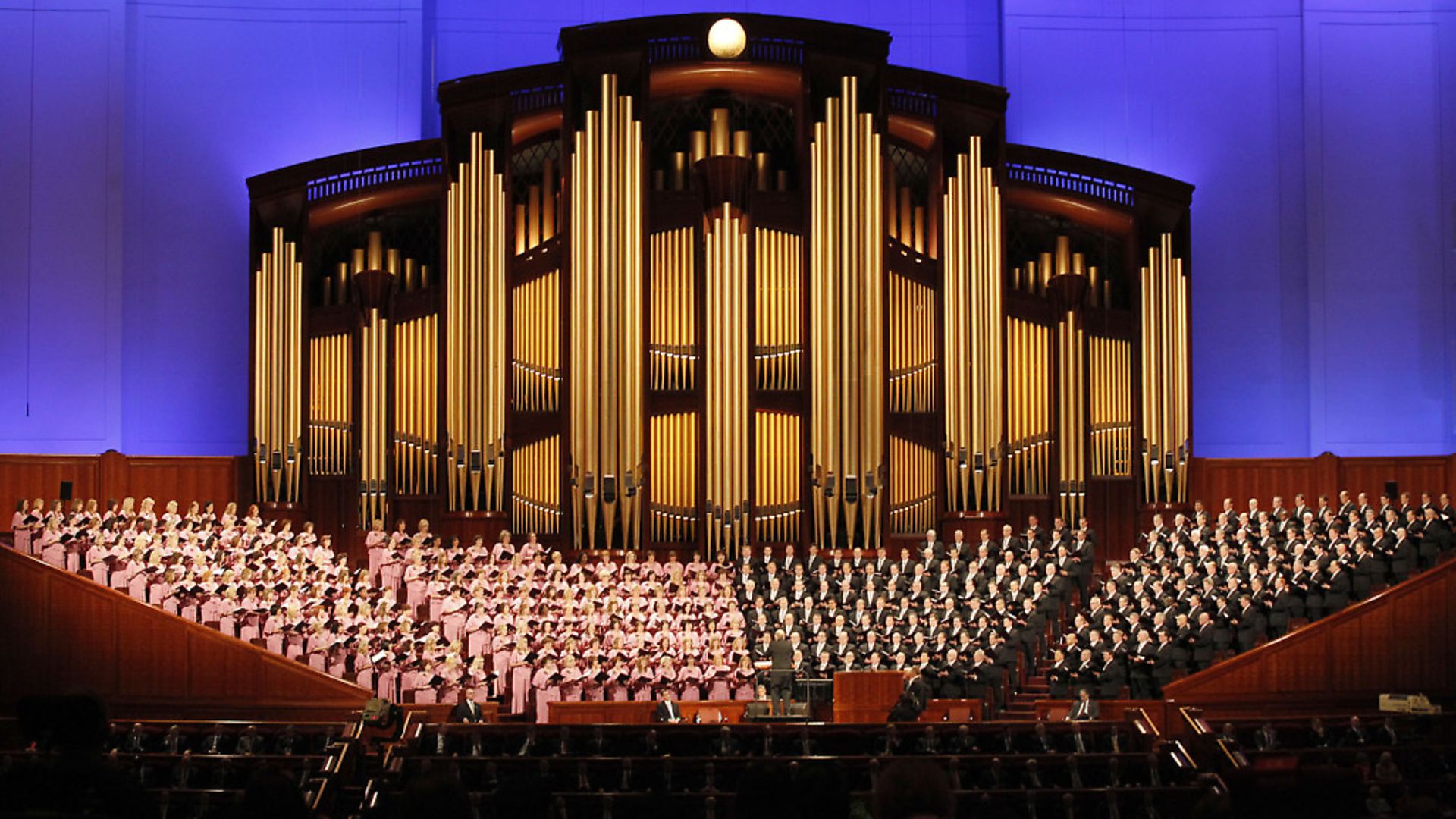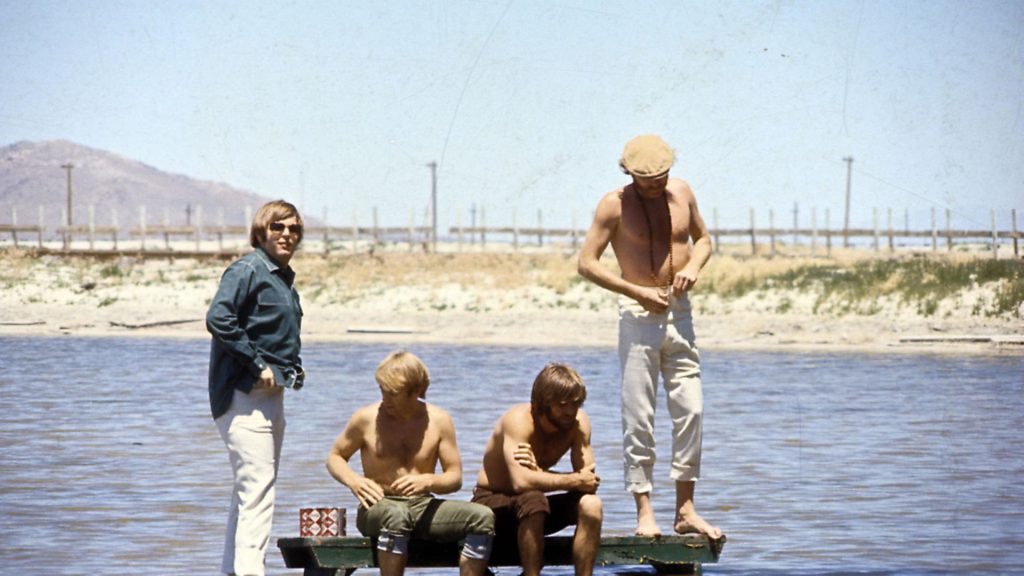
Mormonism is a movement with music in its soul, from its earliest days to the most modern sounds. SOPHIA DEBOICK reports.

In 1847 a former carpenter, Brigham Young, led more than 30,000 people 1,400 miles west and founded Salt Lake City on the land between the Wasatch and Oquirrh mountain ranges. Young was the new president of the Church of Jesus Christ of Latter-day Saints and faced serious challenges after the violent death of its founder, Joseph Smith, and the expulsion of the Mormons from their settlement in Illinois.
Yet, within six years, the building of the Church’s global headquarters, the Salt Lake Temple at Temple Square, had begun. Architecturally, it was something between a fairytale castle, a gothic cathedral and a Stalinist administration building, but it stood both as a symbol of the city as the nucleus from where Utah was transformed from a frontier region to a fully functioning state, and of a faith that today boasts 15 million adherents.
Mormon culture still has an overwhelming presence in the city, yet Mormons themselves recently became a slim minority in Salt Lake County for the first time since the 1930s. As the state capital, a tourist centre and a banking and finance hub, it is a thriving, modern metropolis, and a centre of both sacred and secular music, as Mormon hymns form a rich part of the faith’s culture and notable pop acts have established their careers by the Great Salt Lake.
Depending on your point of view, Joseph Smith was either a con man and philanderer, a holy prophet and martyr, or just one of many revivalist evangelists of the time who happened to get lucky with his particular brand of magical Christianity. Certainly the story of the writing of the Book of Mormon, involving visits from an angel called Moroni, some engraved golden plates buried in a hillside, and an alternative American origin myth with a racist premise about the Native Americans as the descendants of the evil, dark-skinned Lamanites, raises eyebrows today just as in Smith’s time. Indeed, in their early years, the sect faced extensive persecution, not least due to the social unconventionality of their practice of polygamy, leading to their ‘exodus’ to Salt Lake City.
Smith and his brother Hyrum would meet their deaths at the hands of such persecution. As they and their allies sat in jail awaiting trial for inciting a riot after their experiment in founding a utopian Mormon community had gone badly wrong, they were attacked by a mob and the two brothers were shot and killed.
This dramatic scene looms large in Mormon culture, and music plays a central role in the possibly mythologised version of Smith’s death. The story goes that the brothers’ companion, John Taylor, later to become third president of the church, sang the hymn, A Poor Wayfaring Man of Grief – one written by Scottish poet and social reformer James Montgomery in the 1820s, and which Taylor had learned as a Mormon missionary in England – shortly before the attackers burst in. Smith was said to have asked to Taylor to sing the song again – it was one of the last sentences he uttered.
But hymns had already been foregrounded in the Mormon faith before Smith’s death, with the scriptural Doctrine and Covenants stating that Smith’s wife Emma had a revelation from God very shortly after the 1830 founding of the Church that “It shall be given thee to make a selection of sacred hymns which is pleasing unto me, to be had in my church”, adding “For my soul delighteth in the song of the heart; yea, the song of the righteous is a prayer unto me”.
In the context of many other denominations of the time completely rejecting music in church as sinful, this made clear that Mormonism was an explicitly musical faith. Emma Smith’s first hymnbook, heavily directed by hymn-writer and Mormon pioneer W. W. Phelps, would be published five years later and included both old hymns and new, explicitly Mormon ones that she referred to as “Songs of Zion” (among these was Great is the Lord, ’tis Good to Praise by Smith’s later polygamous wife, the poet and chronicler of Mormonism, Eliza R. Snow). Later, Joseph Smith would institute a singing school at the first Mormon settlement in Kirtland, Ohio, and hymn-singing has been a key part of the practice of Mormonism ever since.
The Mormon hymnal now numbers more than 340 songs, with singing opening and closing every worship meeting. British converts would be key to the development of this hymn tradition, and Cheshire-born George Manwaring, who emigrated to Utah as a teenager, wrote many of the best-loved hymns. His Oh, How Lovely Was the Morning, otherwise known as Joseph Smith’s First Vision, was written by a 24-year-old Manwaring in the late 1870s, and captured the 14-year-old Smith’s first vision of God and Jesus Christ and the key words from the encounter: “This is my beloved son. Hear him!”
Manwaring also sang bass in the Tabernacle Choir at the Church’s Temple Square headquarters, a choir with a history in the city almost as long as Mormonism’s own. The small choir that sang at a Church conference just a month after the first Mormon pioneers arrived in Salt Lake City later became a 360-voice choir, and since 1929 it has broadcast a weekly radio programme, Music and the Spoken Word, which is the longest continuously broadcast radio programme in history. Today the choir tours internationally, representing both the finest choral music and Mormonism itself.
But for all the PR value of the Tabernacle Choir, it has been Utah’s pop acts that have been responsible for keeping Mormonism in the public eye in recent decades. The Osmonds, probably the most famous Mormons in the world, hail from Ogden, Utah, 35 miles north of Salt Lake City. For nearly six decades, they have been a prominent force in American popular culture, from appearances on The Andy Williams Show throughout the 1960s, to The Donny and Marie Show on ABC in the late 1970s, and for Britain they have been symbols of all-American squeaky cleanness.
They have never been coy about their Mormon faith. Their 1973 proggy concept album, The Plan (referencing the Mormon concept of the Plan of Salvation), was framed by the brothers as a substitute for going on the Church mission that many young Mormon men undertake, and Donny has since stated that: “I was able to do much more good if I remained in the public eye, and lived the standards of our religion. I have been very touched by the many who say they first became interested in finding out about our Church as they became acquainted with my family and our family values.” This was pop as missionary work.
By contrast, Provo, some 40 miles south of the city, has spawned a movement that kicks back against Mormon social proscriptions. The town is known for its indie scene, and Imagine Dragons had their origins there, later to release four global Top 5 albums. Frontman, Dan Reynolds – who was raised in a Mormon family with eight siblings – founded the LoveLoud Festival in 2017 to defy the Mormon condemnation of homosexuality and support LGBTQ+ youth as they faced widespread prejudice in Utah.
Reynolds’ event, held at the USANA Amphitheatre, in the far south west of Salt Lake City, was the subject of an HBO documentary, Believer, in 2018. Yet, the greatest presence of Mormonism in the world’s stadiums comes in the form of The Killers, whose singer Brandon Flowers was raised in the faith after his parents converted when he was young. First living in Payson, 15 miles south of Provo, the family then moved to Nephi, another 25 miles south – a town named after the prophet and author of the first two books of the Book of Mormon. Flowers is as outspoken as the Osmonds about his faith, telling CBS News: “I don’t know what my life would be like without it. I think I would have been a casualty of rock ‘n’ roll.”
Other rock musicians have concurred with Flowers, and as the place from where Mormonism spread to become an international force, Salt Lake City has had an unlikely role in rock history, which is peppered with adherents to the faith.
Mick Ronson was brought up in the Church in Kingston upon Hull and remained connected with it all his life, ultimately having a Mormon funeral. The New York Dolls’ Arthur ‘Killer’ Kane converted in the 1980s after years of alcohol abuse and a suicide attempt – the once high-heel and corset-wearing bassist became a volunteer at the LA Mormon temple’s genealogy library. And after a turbulent personal life and struggles with gambling addiction, Gladys Knight converted in her fifties. Mormonism is a movement that has music in its soul – it is no surprise that it has spoken to musicians.










